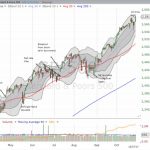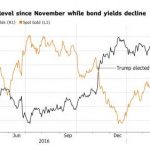In recent months, the dollar has continued to strengthen against all the major peers. The dollar strength is as a result of several factors. First, the US treasuries have continued to climb, with the ten year yields reaching a high of 3%. This was the highest level since 2014. Secondly, there have been a divergence in monetary policy decisions among the central banks.
In this, while the US Fed has decided to maintain the hawkish views, other banks have been cautious. Recently, statement from the BOJ and the RBA have showed that they are reluctant to normalization. Third, the Brexit negotiations have hit a roadblock in the UK as Theresa May continues to find a viable solution to the customs union issue.
Due to the inverse relationship between the US dollar and gold, the strength of the dollar has led to a weakness in gold. Gold has fallen from a monthly high of $1,364 to a low of $1,300. It is currently trading at $1309.
The short term movements of gold will depend on the movements of the dollar. The immediate trigger on this will be the inflation data which will be released tomorrow.
To markets, the immediate question should be on the risk-reward for being short or long gold. Technical indicators such as MACD and RSI show that gold is currently oversold, meaning that there could be some upward momentum on it. Markets should now watch the $1,320 resistance level.












Leave A Comment